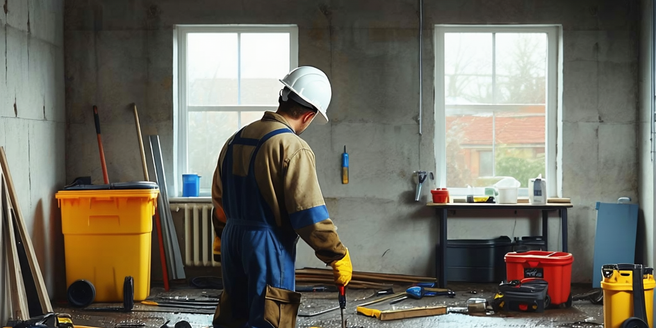
Understanding Common Causes of Basement Water Issues
Basement water issues often stem from various common causes. Poor drainage around the foundation is a primary culprit, allowing water to accumulate and seep through cracks. Additionally, inadequate grading can lead to water pooling around the house instead of flowing away. Gutters and downspouts that are clogged or improperly installed can exacerbate the problem by directing rainwater toward the foundation. Moreover, hydrostatic pressure from groundwater, particularly in areas with a high water table, can force moisture into the basement. Plumbing leaks, either from within the house or from broken external pipes, are also frequent sources of basement water intrusion. Understanding these causes helps in diagnosing issues early and implementing effective solutions to prevent water damage.
Key Strategies for Effective Basement Waterproofing
One effective strategy for basement waterproofing is ensuring proper drainage systems are in place. This includes installing or repairing gutters and downspouts to direct water away from your foundation. Grading the land around your home to slope away from the foundation can also prevent water from pooling near the basement walls. For further protection, waterproof coatings or sealants can be applied to interior basement walls to block moisture. Exterior waterproofing involves applying a sealant to the outside of foundation walls and may require excavation, which is often more effective for severe issues. Installing a sump pump is another strategy that helps by pumping out water that accumulates in the basement. Regular inspection and maintenance of these systems are vital to ensuring long-term waterproofing success.
Choosing the Right Materials for Your Basement
Selecting the appropriate materials for your basement is crucial in preventing water damage. Start with moisture-resistant products like waterproof drywall and floor tiles designed specifically for basements. These materials reduce the chance of mold growth and deterioration when exposed to damp conditions. Using vapor barriers or waterproof membranes on walls and floors before finishing can add an extra layer of moisture protection. Insulation materials such as rigid foam panels are preferable over fiberglass, as they are less susceptible to absorbing moisture. When selecting paint, choose mold-resistant varieties to prevent fungal growth. For flooring, consider options like vinyl or tile that can withstand basement humidity. Choosing the right materials will not only ensure durability but also promote a healthier basement environment.
Regular Maintenance Tips to Prevent Water Damage
To prevent water damage in your basement, consistent maintenance is key. Start by routinely cleaning gutters and downspouts to ensure they are clear of leaves and debris. This will help direct rainwater away from the foundation. Inspect the grading around your home to make sure it slopes away from the basement walls to prevent pooling water. Check for cracks in the foundation and seal them promptly to avoid water seepage. It is also important to regularly test sump pumps, ensuring they are operational and effectively removing water. Additionally, inspect plumbing lines for leaks and address any issues quickly. By adopting a proactive maintenance regimen, you can effectively mitigate the risks of water damage in your basement.
Signs of Potential Water Problems in Your Basement
Identifying signs of water problems in your basement early can prevent significant damage. One indicator is the presence of mold or mildew, which typically grows in damp environments. Look for discoloration on walls or floors, as this may indicate water intrusion. If you notice a musty odor, it could signal ongoing moisture issues. Pay attention to peeling paint or wallpaper, as this might result from excessive dampness. Efflorescence, a white, powdery substance on basement walls, is another sign of moisture problems. Additionally, frequent pooling of water during rainstorms or the appearance of water stains can indicate drainage issues. By being vigilant about these signs, you can take timely action to address and rectify potential basement water problems.
